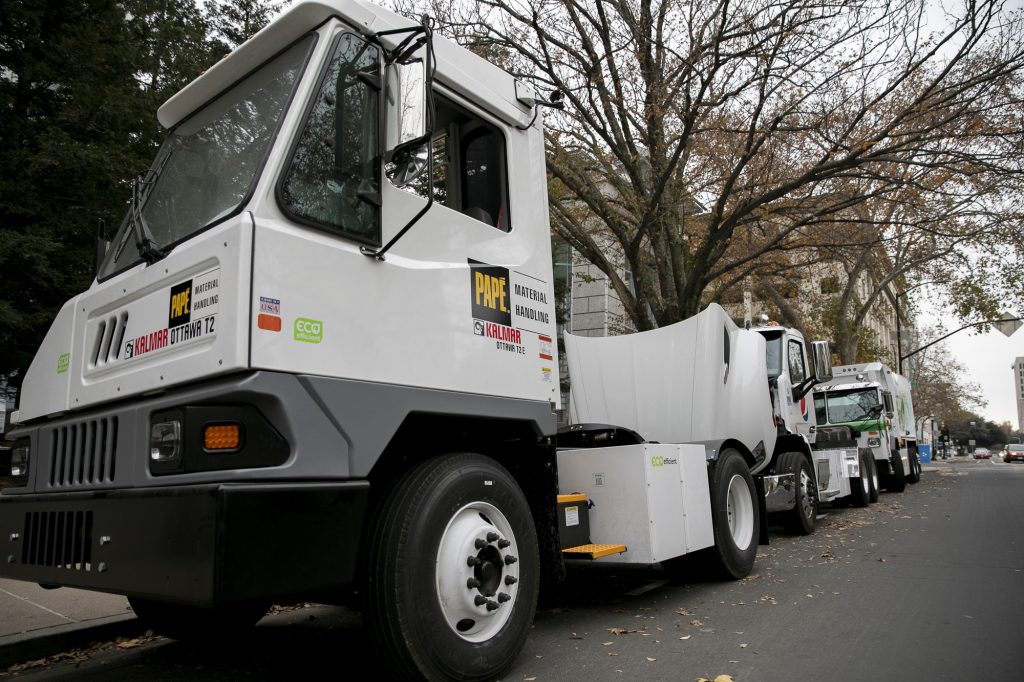NOTE: This commentary originally appeared on CALmatter’s website.
California has often defined an American ideal of mobility, from the Beach Boys harmonizing on “I Get Around” to Hollywood stories like “Ford vs. Ferrari.”
And after California scientists discovered the link between tailpipe exhaust and smog, the Golden State also became a national leader in reducing pollution from cars, trucks and buses.
Now, while the Trump Administration does its worst to pollute our air by rolling back our clean-car standards, Gov, Gavin Newsom has an opportunity to improve public health, fight climate change and help Californians get where they need to go.
In his upcoming State of the State address, Gov. Newsom should announce a massive new investment in clean transportation.
During his 2018 campaign, candidate Newsom pledged to “Set California on the Fast Track to Zero Diesel Pollution by 2030.” It’s now time to make at least a down payment on that promise.
California already has done much more than any other state to adopt advanced transportation technologies, accounting for about half of all electric vehicles sold in the U.S.
The California Air Resources Board has nation-leading standards for zero-emission cars and buses, and is well on the way this year to requiring sale of trucks that emit no pollution from their tailpipes.
But we must do much better, and quickly.
California’s vehicles are responsible for the vast majority of its emissions of toxic diesel particulate matter and smog-forming NOx and are the largest source of greenhouse gas emissions.
The Los Angeles metropolitan area and the San Joaquin Valley continue to regularly face choking levels of smog and soot, and failure to meet healthy air standards could mean a loss of federal transportation funds.
The state is not on track to meet our 2030 standard for reducing climate-changing pollution, largely because transportation emissions have stayed stubbornly high.
Fortunately, we have solutions that could reduce California’s transport-related emissions, and make it easier for residents to get around. Here are three steps we must take:
- Ramp up deployment of battery-electric and hydrogen-fuel-cell cars, trucks and buses, which generate no tailpipe pollution.
- Expand the existing network of transit and inter-city rail, as well as bicycle and pedestrian facilities that foster healthy, active transportation and reduce miles travelled by vehicles.
- invest in innovative projects that are providing clean mobility to disadvantaged communities by helping drivers scrap old clunkers and replace them with clean cars, giving financing assistance for the purchase of electric vehicles, and making electric vehicle-sharing available to low-income Californians.
Communities that have historically faced the environmental injustice inflicted by diesel exhaust from goods movement should be first in line for the cleanest trucks, trains and vessels.
Moving to zero-emission transportation will create jobs and grow California’s economy. In fact, electric vehicles are one of the state’s largest exports.
Twelve vehicle company executives recently wrote to the governor seeking a multi-billion dollar investment in clean transportation, saying that “Keeping investments in cutting-edge technologies on course requires strong, consistent, long-term market signals from California’s leadership.”
Those market signals should include investments in cleaner vehicles, and in the infrastructure necessary to charge and fuel them, as well as in mobility options that do not require personal car ownership.
Incentives for clean transportation complement nation-leading safeguards that require our companies and governments to adopt the cleanest available technologies.
While President Trump tries to make our air dirty again, Gov. Newsom can move us forward to a healthier future. But he will have to commit the funds necessary to make his promises a reality.
